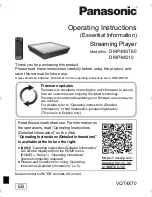
.
4. Troubleshooting
4.1. Common Problems
In most cases, nearly every issue with the CAT5 Multi VGA System can be
resolved by checking the CAT5 termination and making sure that it’s pinned to the
TIA/EIA 568B wiring specification. However, there may be other problems that
cause the system to not perform as it’s designed. Below are solutions to the most
common installation errors.
Problem:
No video signal at the transmitter local port or at the receiver.
Solution:
• Check that both units are powered.
• Make sure the CAT5 cable is terminated correctly per the
TIA/EIA 568B wiring specification.
• Is the display device powered on and functioning?
• There may be a DDC error. See Appendix G.
• In 1080P modes, fixed sync may be necessary. See Appendix
H.
Problem:
Video signal is poor.
Solution: •
Have all receiver settings been finished (see sections 3.4).
• Check all cable connections.
• The video signal’s refresh rate may be set too high. Reset to a
lower refresh rate in your monitor-configuration menu.
• There may be a delay skew issue. Call Technical Support.
Problem:
Serial communication doesn’t work correctly.
Solution:
• Are the serial devices connected properly? Are the serial
parameters correct for source/destination devices?
• Are the serial cables terminated correctly? If a null-modem
cable is used, it must be placed at the receiver end.
• When using RS-232 quad hub transmitters or daisy chain
receivers, the serial signal is a unidirectionally broadcast mode
only. In this mode, all other CAT5 Multi VGA System devices
must be the simplex serial type. For assistance, contact
Technical Support.
• The last device in a quad hub or daisychain configuration must
be a standard receiver unit with a terminated serial board.
CHAPTER 4: Troubleshooting
13














































